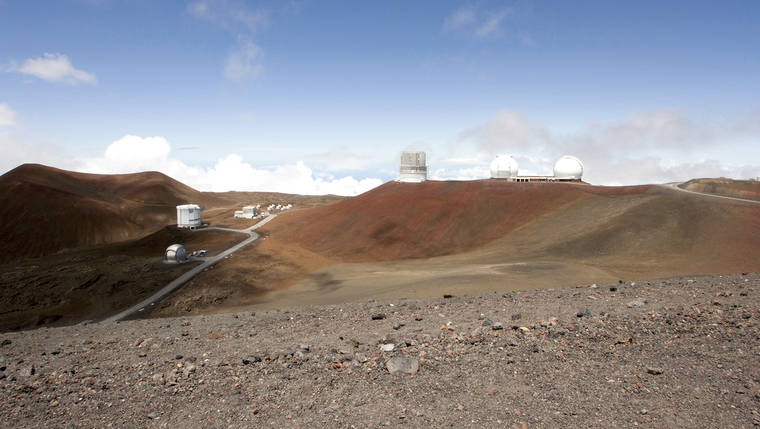Although Gov. David Ige approved the University of Hawaii’s new administrative rules governing Maunakea in January, it could still take a year before all of those rules can be implemented.
The rules codify what activities are permitted and not permitted on UH-managed Maunakea lands, but a framework for actually putting some of those rules into action has not yet been finalized.
“Full implementation will take a number of steps,” said Greg Chun, board member of the Office of Maunakea Management.
UH spokesman Dan Meisenzahl said he believes the full breadth of the rules will be in effect “in six to twelve months.”
The rules incurred significant controversy from the Native Hawaiian community because of its list of prohibited actions, which includes restrictions on camping, music and other activities that overlap with traditional Hawaiian cultural practices. While the rules were since amended to clearly grant exemptions to cultural practitioners, nearly 100 Hawaiians and others testified against the adoption of the rules at a UH Board of Regents meeting in November.
“A lot of people are concerned about losing access (to the mountain),” Chun said. “The tour operators are worried about having to renew their permits. … But we’re not about to put a gate up or anything.”
Currently, Chun said, the parts of the new rules that empower Maunakea rangers to issue citations to violators are in effect. Rangers are able to issue administrative citations to offenders, request that offenders leave the mountain if necessary, impose administrative fines, and, if all else fails, call law enforcement.
However, the administration is still trying to determine a structure for managing such citations. With many visitors to the mountain being tourists from off the island, Chun said it is difficult to issue fines as a penalty if the offender leaves the island the next day.
In any case, Meisenzahl said UH intends to use a soft touch when managing violations: Rangers will issue warnings to violators before moving to citations or fines, he said.
“The rules are there to protect the resources up there,” Meisenzahl said. “We’re not trying to criminalize anyone, and we’re not trying to get rich off of these fines or anything.”
Other rules that are still to be implemented include a requirement that all visitors to the mountain undergo an orientation process informing them about the cultural and natural resources of the mountain. Chun and Meisenzahl both said that the jury is still out on what the nature of that orientation will be.
Because there is no requirement for vehicles to stop on their ascent of Maunakea, the best way to give a presentation to guests without disrupting traffic is yet to be determined.
Meisenzahl said UH already requires staff to undergo an orientation, but a larger-scale orientation for all visitors might need to take different forms — possibly through a live presentation at the Visitor Information Station, or through brochures distributed to entering vehicles.
So far, the impacts of the new rules to tour companies are minimal. Rob Pacheco, CEO of tour company Hawaii Forest and Trail, said the only immediate impacts he is aware of is positive: The new rules prohibit two-wheel drive vehicles north of Halepohaku, which cuts down on traffic and reduces wear and tear to the road.
“But, down the line, it’s going to be a new regime,” Pacheco said, adding that he expects that UH will change the terms for tour companies to obtain permits to access the mountain.
Chun said UH is in the process of determining whether to increase or decrease the number of available tour permits.
He also said much of the answers for these logistical questions depend on the findings of an ongoing three-year tour capacity study that began last year.
That study, along with other analyses of visitor volume and demographics, will help shape the best ways for UH to direct and guide traffic to and around the mountain, he said.
Email Michael Brestovansky at mbrestovansky@hawaiitribune-herald.com.






